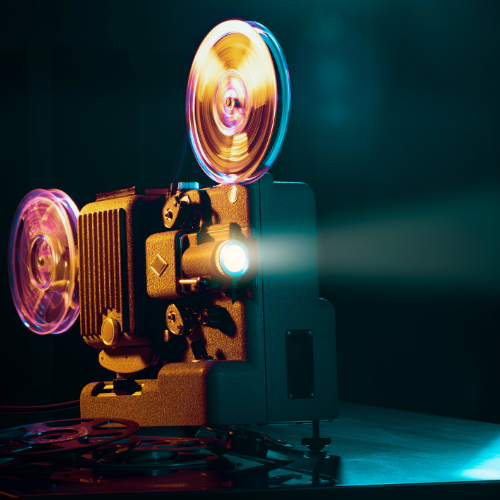The screening of a film print, as many involved in the cinema world know, can be downright expensive, the cost of the prints themselves being only one part of the equation. “Paying fees or a salary to a projectionist, paying for the shipping of film prints (often international), paying archival rental fees: these are expenses that are more or less invisible to the average theater patron, and these expenses are not easily recouped by ticket sales,” says Max Carpenter, film programmer and founder of the Film Exhibition Fund.
Enter the Film Exhibition Fund’s Celluloid Series Support Grant, which gives grants of a few thousand dollars apiece to help cinemas mount a celluloid series that they might not have been able to afford otherwise. This summer has seen the first two series funded in part by the Film Exhibition Fund reach audiences: an Andy Warhol series from Anthology Film Archives and a collection of shorts from the New York art space Microscope Gallery.
“In this day and age a commitment to film projection is easier said than done thanks to the dearth of functioning film labs, the categorization of so many prints as archival, and the sheer cost of film rentals and shipping,” says Anthology programmer Jed Rapfogel. “In that context, the creation of The Film Exhibition Fund—and the (financial but also moral) support they provide—is truly a godsend! It’s a much-needed positive development for those venues that are determined to keep film projection alive.”
“There is a sense of, ‘Only film snobs care about this,'” when it comes to preserving celluloid as a film medium, says Carpenter. But for the Film Exhibition Fund, preserving film as a medium is less about the film-versus-digital debate than it is about just plain availability.
“There have been a ton of films that are not on DCPs,” says Carpenter. “It does come down to, are you interested in cultural history or not? There are some people that are legitimately like, ‘No, I want to see the new Tom Cruise film, and I don’t care about anything that’s from 1980 or before.'” For those with a wider interest, he adds, attending a screening on film “is really the only way to see 90 percent of things at this point. It’s a much bigger issue than whether you’re a film-versus-digital person. This is a much more crucial issue than I think people realize.”
The Film Exhibition Fund is a “shoestring operation,” says Carpenter, one that relies upon donations to amass enough money to eventually award another grant; on its board are archivist Laura Major, film nonprofit executive Jake Perlin, and curator David Schwartz. “These small injections of funds are vital [to theaters],” Carpenter explains. “They seem small and silly to the outsider, but they are really what these [series] sink or swim on. I’ve have personally presented sold-out film screenings that were still in the red, budget-wise.”
More costly in the short-term it may be, but—in the macro sense—celluloid is a vital part of the film ecosystem. Though it’s somewhat finicky to archive, requiring specific light, humidity, and temperature conditions, once a celluloid print is responsibly archived it will be playable for much longer than a film stored digitally. (Hard drives are lucky to last five years without breaking or becoming obsolete, never mind decades.)
From the perspective of a theater owner, screening a film on celluloid can be a powerful branding tool. Over the last decade, argues Carpenter, repertory cinemas have realized that if you “show a film on 35[mm], you can put that on the marquee, and people will come.” Even if said people don’t know the difference between 35mm , 16mm, and 8mm, there’s an awareness that seeing a film on print is rare, and rare is special, so if a favorite movie shows up at your local cinema… well, you may have seen it dozens of times, but you haven’t seen it on film. The pull of novel experiences is even stronger now, after years of lockdown, with premium formats a major factor in getting moviegoers back to the cinema. But the urge to get out of the house and see something interesting in a communal setting doesn’t only apply to gigantic screens or motion seating. “I’ve heard anecdotally, from a lot of my colleagues in the film world, that a very strange thing has started to happen since theaters reopened after the pandemic,” says Carpenter. New York audiences, normally “fickle,” have been flocking to rep programming beyond the usual suspects, like your Kubricks and Hitchcocks. “They’re just coming out in droves for things…. It’s a moment right now. You have to choose certain issues when it comes to branding, and focusing on celluloid seems like a no-brainer to me.”
In the future, Carpenter hopes to expand the Film Exhibition Fund so that it can support celluloid in other ways, whether that’s educating projectionists-to-be on the requisite technology or renting equipment to cinemas not equipped to play film. Until then, the Fund will continue funding celluloid screening series with the to-be-determined opening of the second round of Celluloid Series Support Grants. When, exactly, that happens will depend on donations. Says Carpenter: “No one is making any money off this. It’s literally just a money bank. Once it gets past [a certain] point, more grants.”



Share this post